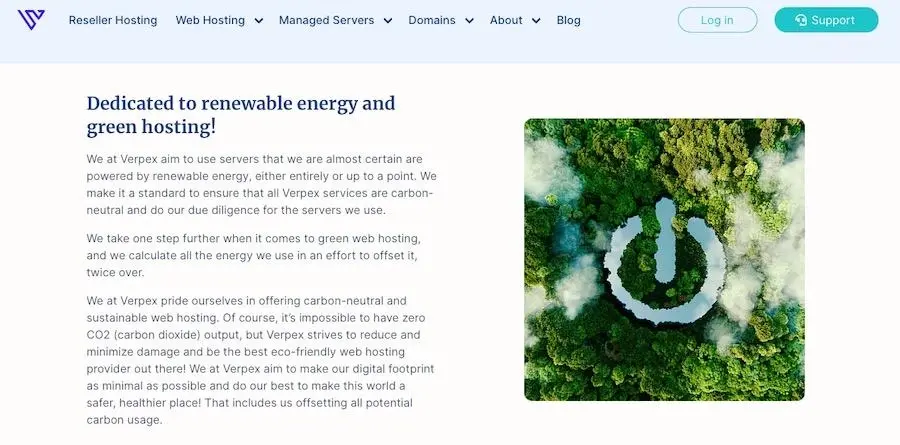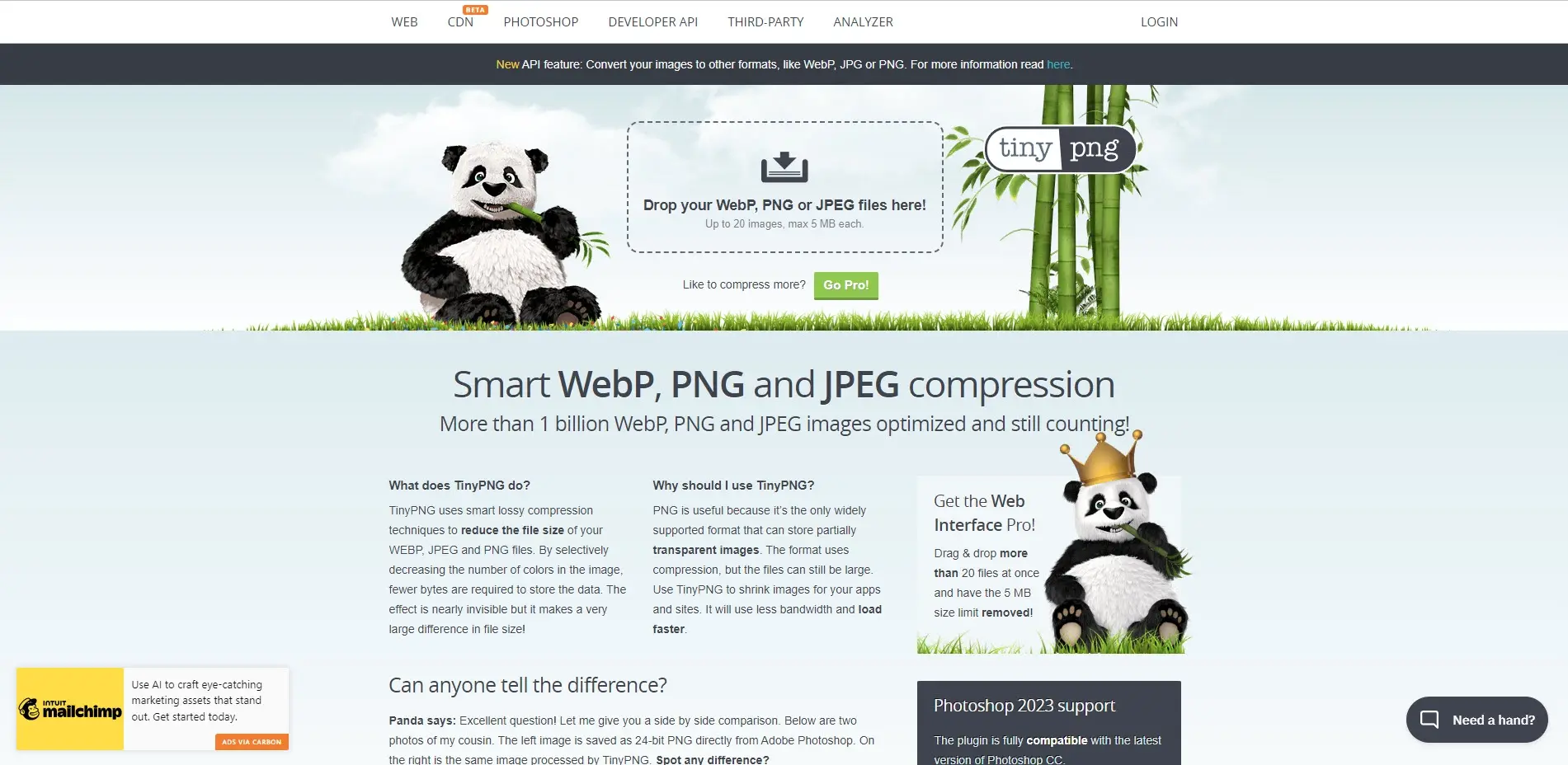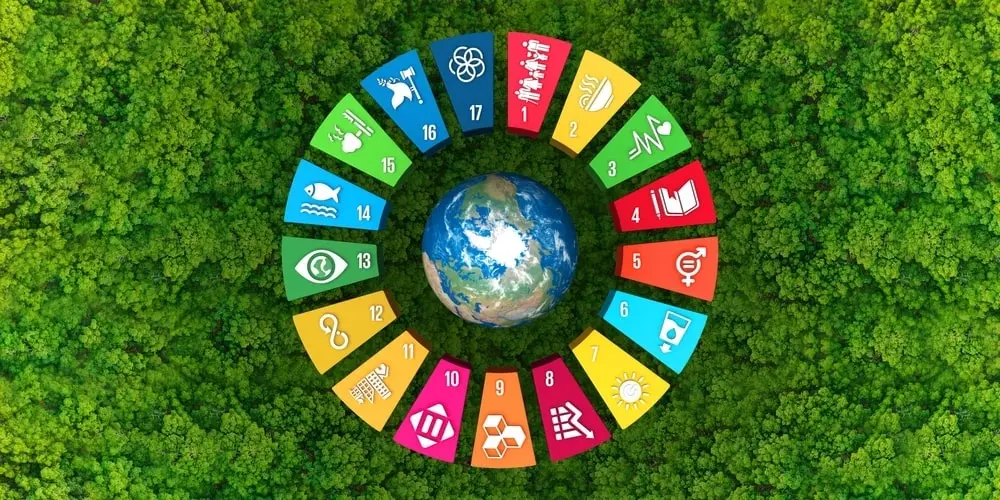Ever stopped to think about the environmental impact of that optimized and great-to-look-at website you just deployed? Digital spaces aren't as "clean" as they seem. And unfortunately, there are real-world impacts to having a digital presence.
But not to worry. We're here to explore how you can be a modern developer with a green thumb, so to speak. This isn't just about saving the planet. Rather, it's about creating efficient, user-friendly websites that are a win-win for everyone involved -- including planet Earth.
The Environmental Impact of Web Development
Let's start with some hard truths. Did you know that the internet is responsible for about 2% of global greenhouse gas emissions, according to the Website Carbon Calculator?

Each time someone visits a web page, it emits anywhere from 20 to 300 milligrams of CO2 per second. Yes, that means your Netflix binge or endless scrolling through social media feeds has a carbon cost. You can read more about this in an eye-opening article by WP Engine.
And let's not forget about data centers. These massive facilities store and process the data we generate every day. But they're also energy hogs, often running on fossil fuels and requiring extensive cooling systems.
So, the next time you marvel at the speed of your cloud storage, remember there's a literal cloud of emissions behind it.
All of that sounds pretty bleak, we know. Thankfully, there are solutions to these issues that can be adopted.
Efficient Resource Consumption
The key is to build sustainable websites and applications that consume fewer resources. Here are some ideas:
Code Optimization
First things first, let's talk about code. Efficient coding techniques can go a long way in reducing your website's carbon footprint.
For instance, code minification removes all unnecessary characters from your code without changing its functionality. This makes your website lighter and faster to load, reducing the amount of energy required to run servers.
Techniques like image compression and caching can also help in this regard.
Data Management
Data is what makes web applications function and serve a purpose, but managing it efficiently is a must for sustainability. This involves everything from how you store data to how you retrieve it.
For example, using intelligent caching mechanisms can reduce the number of database queries, which saves energy. Also, think about data compression to minimize storage requirements.
**Device Compatibility and Responsive Design*
Most people are using multiple devices to access the internet these days, so responsive design isn't just a nice-to-have -- it's a must. Creating a single, responsive site eliminates the need for multiple versions of your site, reducing redundancy and, consequently, energy consumption.
User Experience and Behavior
It's not only about the code and the data. User experience and behavior are just as important when it comes to web development sustainability.
Design for Sustainability
User experience (UX) is a big deal, right? But have you ever thought about designing for sustainability? It's not just about making things look pretty and functional. It's also about encouraging the responsible use of digital resources.
For instance, a well-designed, intuitive interface can help users find what they're looking for more quickly, reducing the time they spend (and the energy consumed) on your site. According to Forbes, implementing user-friendly interfaces and intuitive navigation can promote efficient usage.
Features that Encourage Eco-Friendly Behavior
Let's take it a step further. How about incorporating features that nudge users toward eco-friendly behavior? Think power-saving modes, automatic session timeouts, and intelligent notifications that prompt users to take energy-saving actions.
When you design with the user in mind, you're not just enhancing their experience. You're also contributing to a more sustainable approach to digital life.
Hosting and Infrastructure
Finally, let's talk about hosting and infrastructure. If you're running your servers or renting space in a data center, make sure to select one that is environmentally conscious.
Cloud Computing
Cloud computing can also be a green choice for your website. Cloud-based infrastructure allows for resource consolidation, meaning fewer servers are needed, which translates to less energy consumption.
Plus, many leading cloud providers are adopting eco-friendly practices, so you can rest easy knowing you're in good company.
Green Data Centers
Data centers are gradually getting an eco-friendly makeover. Many are now using renewable energy sources and implementing advanced power management systems. So, when choosing a hosting provider, look for those that commit to using green data centers. Your website will still be up and running, but with a much smaller carbon footprint.
Green Web Hosting

And speaking of hosting, did you know there are web hosts out there that are entirely green? They use renewable energy to power their servers. Here are a few worth checking out:
Your choice of hosting can make or break your eco-friendly web development practices. So choose wisely!
Best Practices for Sustainable Web Development
Sustainable web development practices are the way of the future. With that fact in mind, here's what you can do to embrace them:
Image Optimization
High-res images are fantastic and they make websites look stunning. But they're also one of the biggest culprits when it comes to slow load times and high energy consumption. So, what's the middle ground?

Simple: Be picky about the images you use. Do they serve a purpose, or are they just eye candy? Once you've made your selection, use tools like TinyPNG to compress them before uploading. This small step can make a big difference in your site's performance and its carbon footprint.
Video Strategy
Videos are engaging, no doubt about it. But they're also energy hogs. If you must use videos, be strategic about it. Limit their number, avoid autoplay, and consider whether a video background is really necessary. Remember, every megabyte counts when it comes to sustainability.
Lazy Loading
Lazy loading only loads images and other media as they're needed. So, if a user never scrolls down to the bottom of a page, those images won't load, saving energy. It's a win-win for user experience and the planet.
Web Caching
Caching is another important part of sustainable web development. It involves storing copies of files in a cache (or temporary storage) so that they can be more quickly accessed the next time a user visits your site. This reduces the need for repeated data transfers from the server, saving energy and improving site performance.
Regular Clean-Up
Think of this as the digital equivalent of spring cleaning. Periodically go through your website and get rid of anything that's not needed, be it unused plugins, outdated content, or redundant media files. A leaner website is not just easier to manage but also more energy-efficient.
Site Navigation
Last but not least, let's talk about navigation. A well-structured, intuitive navigation menu can make a world of difference in how users interact with your site. The quicker they find what they're looking for, the less time they spend on your site, reducing its energy use.
So, spend some time thinking about your audience's needs and how best to meet them through clear, logical navigation.
Sustainable Web Development Matters
Sustainable web development isn't a fad -- it's the future. And developers have a responsibility to create websites that are functional and user-friendly and also kind to our planet. As we mentioned previously, your hosting choice carries a lot of weight here. Verpex Hosting, in particular, is a fantastic green web host with a commitment to the use of renewable energy, all while providing top-tier hosting solutions for WordPress.
We hope you enjoyed this guide to making your web development practices more eco-friendly. After all, It's not just about coding -- it's about coding responsibly. And remember, every little bit helps. So, why not start today?
Frequently Asked Questions
Can free HTML editors be used for professional web development?
Yes, free HTML editors like Visual Studio Code and Atom offer advanced features and are suitable for professional web development.
How can I get assistance with my web development hosting account?
Our support team is available 24/7/365 to assist with your web development hosting account. You can contact us via live chat, email, or phone for any queries or concerns.
Do I need web developer skills to use Shopify or WooCommerce?
No. Both platforms welcome beginners, but you might get more out of WooCommerce’s extensions if you’ve got some previous experience.
Can I host multiple web development projects on a single Verpex plan?
Yes, with Verpex Web Development Hosting, you can host multiple web development projects under a single plan, making it easy to manage your projects and optimize your resources.

Brenda Barron is a freelance writer and editor living in southern California. With over a decade of experience crafting prose for businesses of all sizes, she has a solid understanding of what it takes to capture a reader's attention.
View all posts by Brenda Barron




















